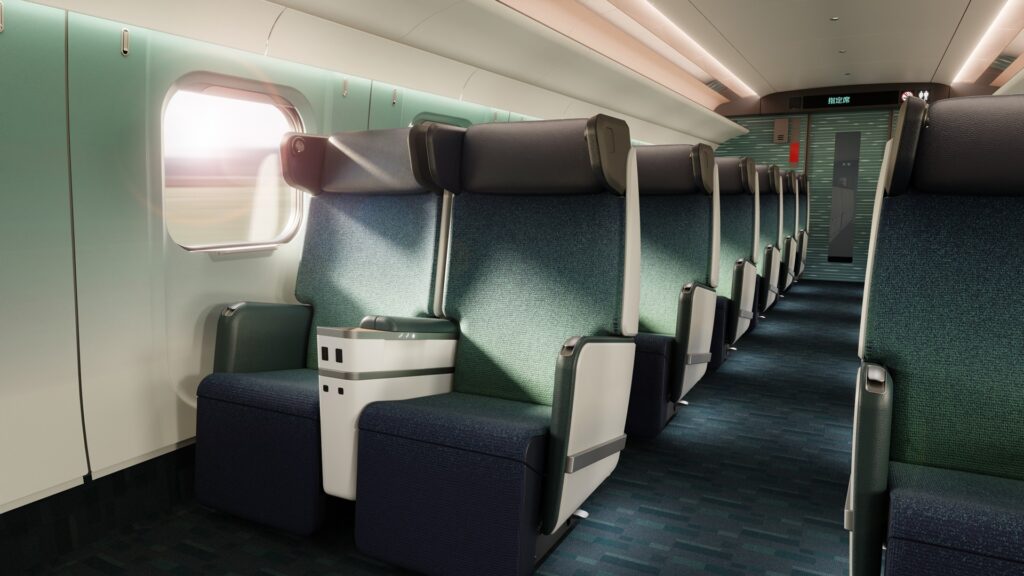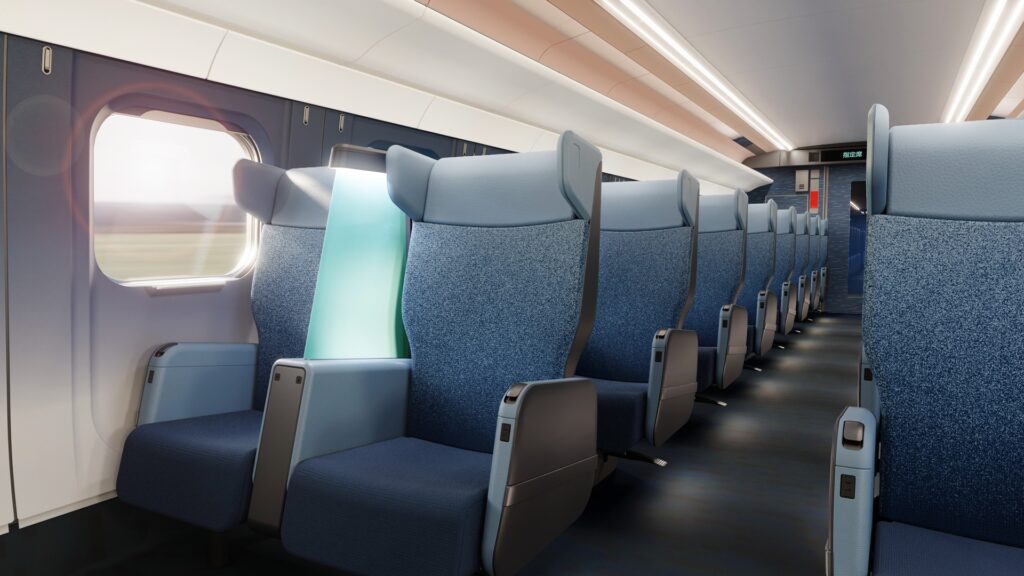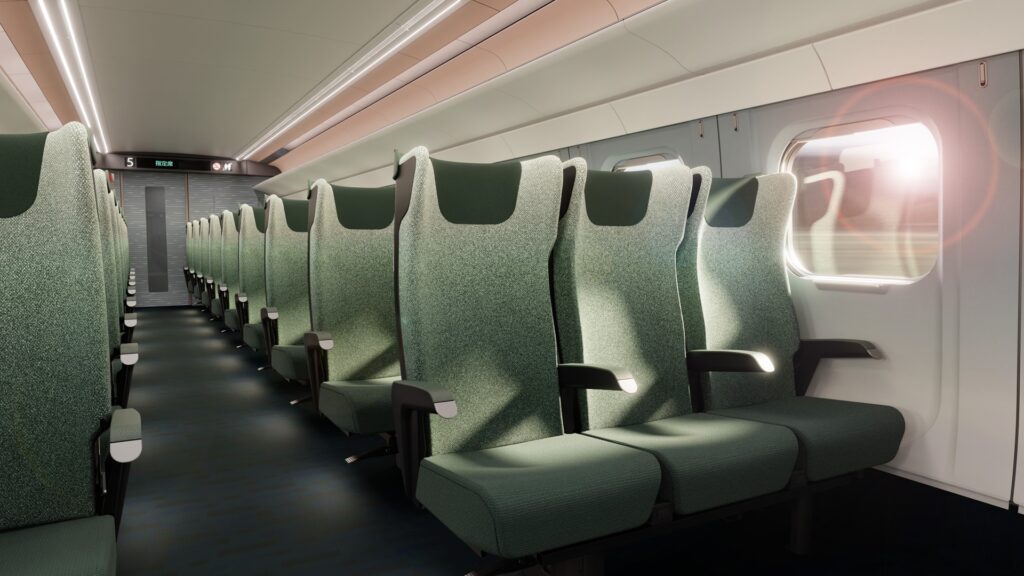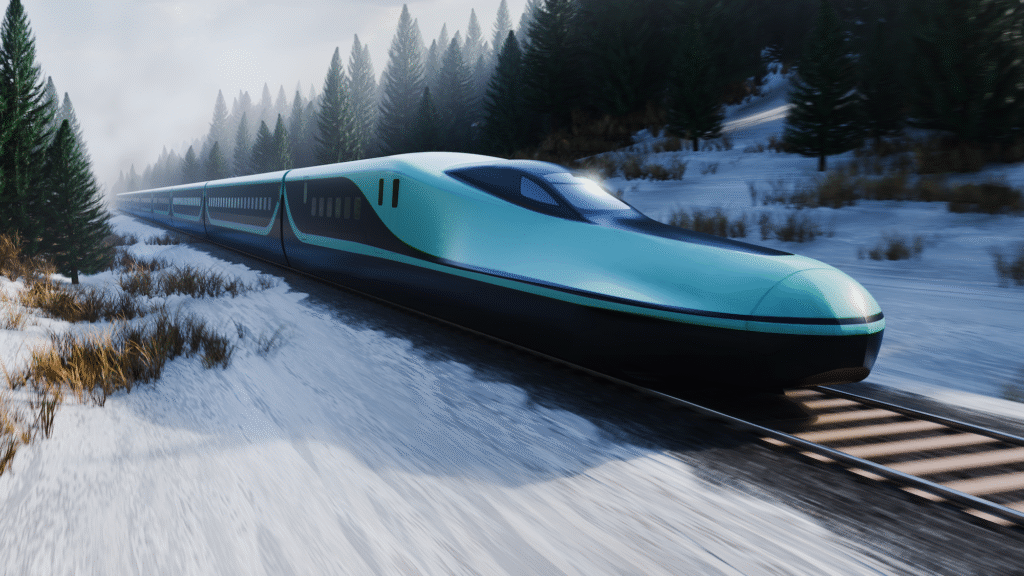The E10 Shinkansen bullet train will launch on a key Tokyo route from 2030, featuring UK-designed livery and interiors inspired by Japan’s natural landscapes. Olivia Palamountain reports
Japan has unveiled its next generation bullet train, the E10 Shinkansen, which will enter service in 2030 with a striking cherry blossom-inspired design created by British consultancy Tangerine.
The new trains will replace the ageing E2 and E5 models on the busy Tohoku route connecting Tokyo with northeastern Japan, carrying millions of passengers annually through some of the country’s most scenic mountain and coastal regions.
Breaking with tradition, JR East selected Tangerine as the first non-Japanese design partner to work on the iconic Shinkansen fleet. The London-based firm has created both the exterior livery and interior layouts spanning multiple passenger classes. The E10’s exterior features a distinctive mid-green colour scheme reflecting the forests and coastlines along its route, with graphic elements inspired by sakura flower silhouettes. The design aims to capture Japan’s natural landscapes while maintaining the aerodynamic efficiency crucial for high-speed operation.
The E10’s exterior features a distinctive mid-green colour scheme reflecting the forests and coastlines along its route, with graphic elements inspired by sakura flower silhouettes. The design aims to capture Japan’s natural landscapes while maintaining the aerodynamic efficiency crucial for high-speed operation.
Inside, the trains prioritise passenger comfort through carefully engineered lighting systems using indirect wash lights to create a calming atmosphere. Seating arrangements and layouts vary across classes but maintain consistent design elements, with graduated wall and seat fabrics intended to deliver a premium experience while ensuring operational efficiency.
“The E10 Shinkansen represents a milestone in UK-Japan collaboration within the rail sector, setting new benchmarks for hospitality-focused design and sustainable travel,” says Matt Round, chief creative officer at Tangerine. “With its blend of Japanese spirit and user-centric design, the E10 Shinkansen is poised to redefine high-speed rail travel for decades to come.” JR East’s decision to commission international design expertise signals confidence in cross-cultural collaboration whilst preserving the bullet train’s distinctly Japanese character. The E10 development comes as Japan’s rail operators face increasing competition from budget airlines and seek to enhance the appeal of train travel for both domestic and international passengers.
JR East’s decision to commission international design expertise signals confidence in cross-cultural collaboration whilst preserving the bullet train’s distinctly Japanese character. The E10 development comes as Japan’s rail operators face increasing competition from budget airlines and seek to enhance the appeal of train travel for both domestic and international passengers.
The Tohoku Shinkansen route, opened in 1982, currently operates at speeds up to 320 km per hour and serves major cities including Sendai and Morioka. The line plays a crucial role in connecting Tokyo with Japan’s northeastern prefectures, supporting both business travel and tourism to regions known for natural beauty and cultural heritage. The E10 project now enters the design implementation phase, with detailed engineering and testing expected to continue through the decade before passenger service begins.
The E10 project now enters the design implementation phase, with detailed engineering and testing expected to continue through the decade before passenger service begins.
East Japan Railway Company operates the largest network among Japan’s seven privatised railway companies, serving Tokyo and eastern regions since the breakup of Japanese National Railways in 1987.


AloJapan.com